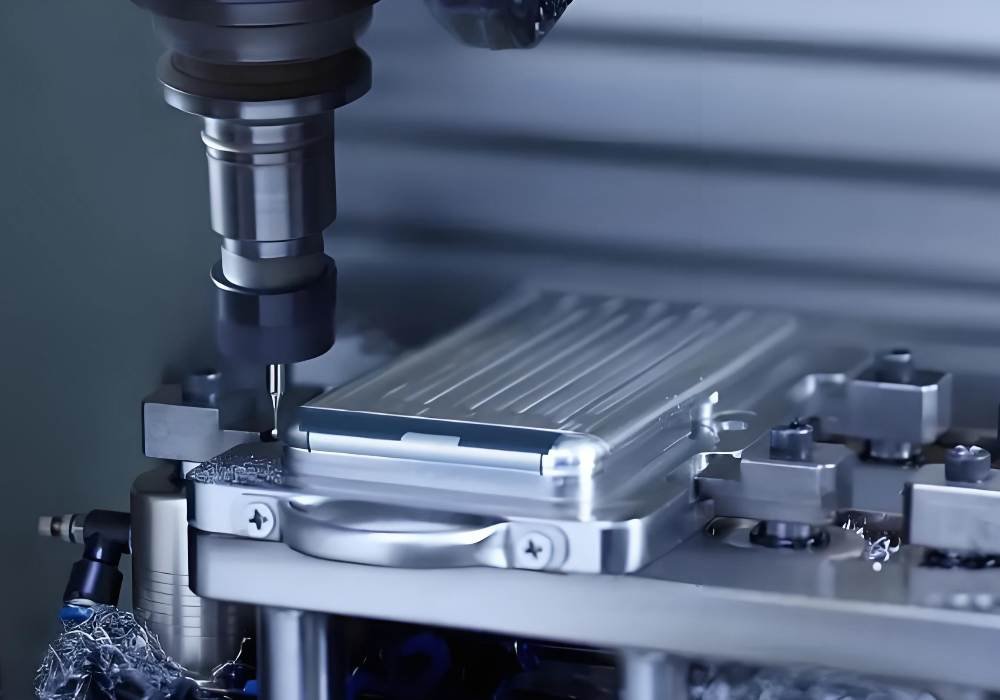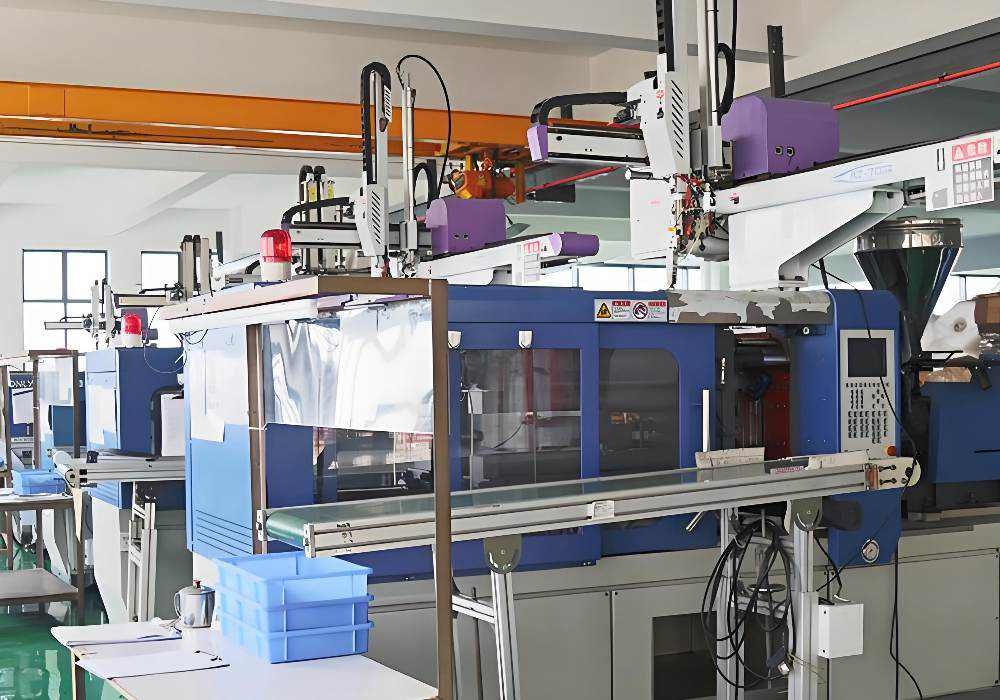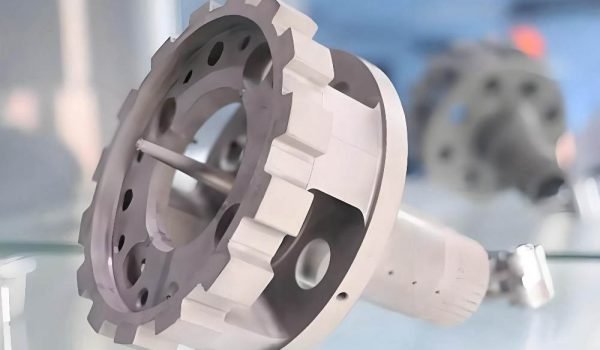Metal injection molding is a way to make products that combines plastic and metal benefits. It uses a mix of metal powder and binder in a mold. This creates detailed designs. Knowing what metal injection molding is helps see its value in fields like aerospace and electronics.
Overview of Metal Injection Molding
Metal injection molding is a versatile process that brings precision, efficiency, and cost savings. It’s great for making complex parts with detailed designs. This makes it a top choice for many industries.
Choosing metal injection molding depends on the need for precision, the material, and the application. For example, aerospace needs parts that are both precise and durable. Metal injection molding fits the bill perfectly. It also reduces waste and speeds up production, making it ideal for large orders.
Definition and Introduction
Metal injection molding combines plastic molding’s ease with metal’s strength. It involves injecting a metal powder and binder mix into a mold. This shapes the mix into the desired part.
Key Applications
Some key uses of metal injection molding are:
- Aerospace components, like engine parts and satellite parts
- Automotive parts, such as engine components and gearboxes
- Medical devices, like surgical tools and implants
Advantages Over Traditional Methods
Here are the benefits of metal injection molding over traditional methods:
- It offers higher precision and accuracy
- It reduces material waste and energy use
- It boosts production speed and efficiency
The Process of Metal Injection Molding
Metal injection molding is a detailed process with several key steps. The first step is material preparation, which is essential for the product’s quality. Choosing the right metal injection molding materials is critical. These materials must meet the product’s specifications and quality standards.
The next step is molding, where the material is injected into a mold. Metal injection molding techniques shape the product’s form and structure. Controlling temperature, pressure, and other factors is vital for quality parts.
Material Preparation
Material preparation mixes metal powder with a binder. This mixture is then granulated and ready for molding. The choice of metal injection molding materials and preparation affects the product’s strength, density, and corrosion resistance.
Molding Techniques
Metal injection molding uses various molding techniques like injection, compression, and transfer molding. Each has its benefits and drawbacks. The right technique depends on the application and desired product properties. Metal injection molding techniques need precise control for quality parts.
Sintering Process
The final step is sintering, where the part is heated to remove the binder and fuse metal particles. This can be done in different atmospheres like vacuum, nitrogen, or hydrogen. The atmosphere choice depends on the application and desired properties.

| Step | Description |
|---|---|
| Material Preparation | Mixing of metal powder with a binder |
| Molding | Injection of the prepared material into a mold |
| Sintering | Heating of the molded part to remove the binder and fuse the metal particles together |
Materials Used in Metal Injection Molding
The choice of material is key in metal injection molding. It affects the precision and quality of the final product. Materials like strength, durability, and resistance to corrosion are important. There are common metals, ceramics, and composites, each with its own uses.
Choosing the right material depends on the product’s use, needed precision, and budget. For example, stainless steel and titanium are great for medical and aerospace needs. They are strong, resistant to corrosion, and safe for the body. Ceramics and composites are better for high heat, electrical insulation, or special mechanical needs.
Common Metals Employed
- Stainless steel
- Titanium
- Aluminum
- Copper
By adjusting the material and process, metal injection molding can meet specific needs. This includes changing density, hardness, and surface finish. Knowing the properties of different materials helps manufacturers make high-quality parts with exact dimensions.
Material Properties
The properties of metal injection molding materials are vital. They include mechanical, thermal, and electrical properties. By picking the right materials and controlling their properties, makers can create complex parts with great precision and consistency. This makes metal injection molding a versatile and reliable method.
Precision in Metal Injection Molding
Precision metal injection molding is key in making products. It ensures the quality and performance of the final item. It’s vital in fields like aerospace, automotive, and medical devices.
Achieving Tight Tolerances
To get precision in metal injection molding, several methods are used. These include:
- Advanced tooling design and manufacturing
- Precise control of injection molding parameters
- High-quality raw materials
These methods help make parts with complex shapes and tight tolerances. This makes precision metal injection molding perfect for high-accuracy needs.
Importance of Precision in Applications
In many industries, precision metal injection molding is essential. It ensures components work well and safely. For example, in aerospace, it’s used for parts that need exact tolerances for safety and efficiency.
In the medical device field, it’s used for parts with precise shapes and tolerances. This is key for the safety and effectiveness of medical devices.
Understanding the need for precision in metal injection molding is important. By using techniques for tight tolerances, manufacturers can make high-quality parts. These parts meet the strict needs of various industries.
| Industry | Application | Precision Requirement |
|---|---|---|
| Aerospace | Engine components | Tight tolerances and precise geometries |
| Automotive | Transmission components | Precise control of injection molding parameters |
| Medical Devices | Implantable devices | Precise geometries and tight tolerances |
Industries Benefiting from Metal Injection Molding
Metal injection molding is used in many fields. It’s known for its precision and cost-effectiveness. Industries choose it based on material needs, production volume, and tolerance requirements.
Some key industries that use metal injection molding include:
- Automotive manufacturing, where it makes complex engine parts and other components
- Aerospace components, where its high precision and strength are essential
- Consumer electronics, for small, detailed parts like connectors and switches
These industries value metal injection molding for its ability to create complex shapes with high accuracy. It’s perfect for tasks where traditional methods can’t meet the standards.
Using metal injection molding has greatly improved product quality and reduced costs. It has also made production more efficient. As the technology improves, more industries will likely use it for its benefits.
Comparison with Other Manufacturing Techniques
When looking at metal injection molding, it’s key to compare it with other methods. This includes metal casting and CNC machining. Metal injection molding vs metal casting shows both can make metal parts. But, metal injection molding is more precise and can handle complex designs.
Metal injection molding vs CNC machining points out their differences. CNC machining is great for small batches or prototypes. On the other hand, metal injection molding is better for making lots of parts with tricky shapes.
Advantages and Disadvantages
- Metal injection molding offers high precision and complex part design
- Metal casting provides a wider range of material options
- CNC machining is suitable for low-volume production or prototyping
The right choice between these methods depends on the project’s needs. This includes how many parts you need, what materials you want, and how complex the parts are.

Quality Control in Metal Injection Molding
High-quality products are key in metal injection molding. This is achieved through strict quality control. Inspections and tests ensure products meet standards. Metal injection molding inspection is vital to spot defects.
Precision and decision-making are key in quality control. Manufacturers evaluate the process and make smart decisions. This leads to better inspection methods and standards.
Inspection Methods and Standards
Some common inspection methods include:
- Visual inspections for surface defects
- Dimensional checks for size and tolerance
- Material testing for mechanical and physical properties
Common Quality Issues
Quality issues in metal injection molding include:
- Defects from the molding process
- Irregularities from the sintering process
- Contamination or impurities in materials
Optimizing Production for Quality
To improve production quality, manufacturers can:
| Strategy | Description |
|---|---|
| Process optimization | Monitor and improve the production process to reduce defects |
| Material selection | Choose high-quality materials that meet standards |
| Operator training | Train operators on the latest inspection methods and standards |
By using these strategies and focusing on quality control, manufacturers can make high-quality products. These products meet the required standards and specifications.
Conclusion: The Future of Metal Injection Molding
The precision and versatility of metal injection molding are changing the game in modern manufacturing. The future of metal injection moldinglooks bright, with lots of room for growth and new uses in many industries.
metal injection molding lets us make complex shapes and high-quality parts easily. It’s a top pick for the automotive, aerospace, and electronics fields. It’s also cost-effective and can work with many materials, making it a favorite for makers looking to improve their work.
As tech gets better, we’ll see even more metal injection molding improvements. Expect better materials, more automation, and greener practices. Eco-friendly methods and using recycled materials will grow, meeting the need for green manufacturing.
FAQ
1. What are the advantages of metal injection molding over traditional manufacturing methods?
MIM beats traditional methods like casting and CNC machining in many ways. It can make complex shapes with high precision, uses less material, and is cheaper for small to medium parts in large quantities.
2. What types of materials are commonly used in metal injection molding?
Many materials are used, like stainless steel, titanium, tungsten, and alloys. Ceramic and composite materials are also used for parts with special properties.
3. How is precision achieved in metal injection molding?
Precision is key in MIM. It uses tight molding control, precise material prep, and advanced sintering. Choosing the right materials and process is vital for precision.
4. How does metal injection molding compare to other manufacturing techniques?
MIM has better control and material use than casting. It’s also cheaper than CNC machining for small to medium parts in large quantities.




